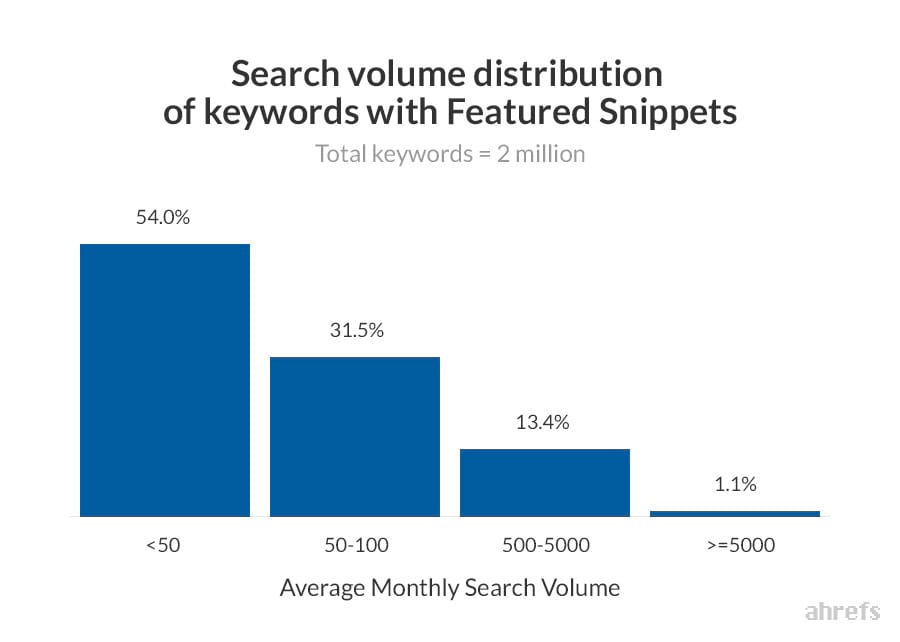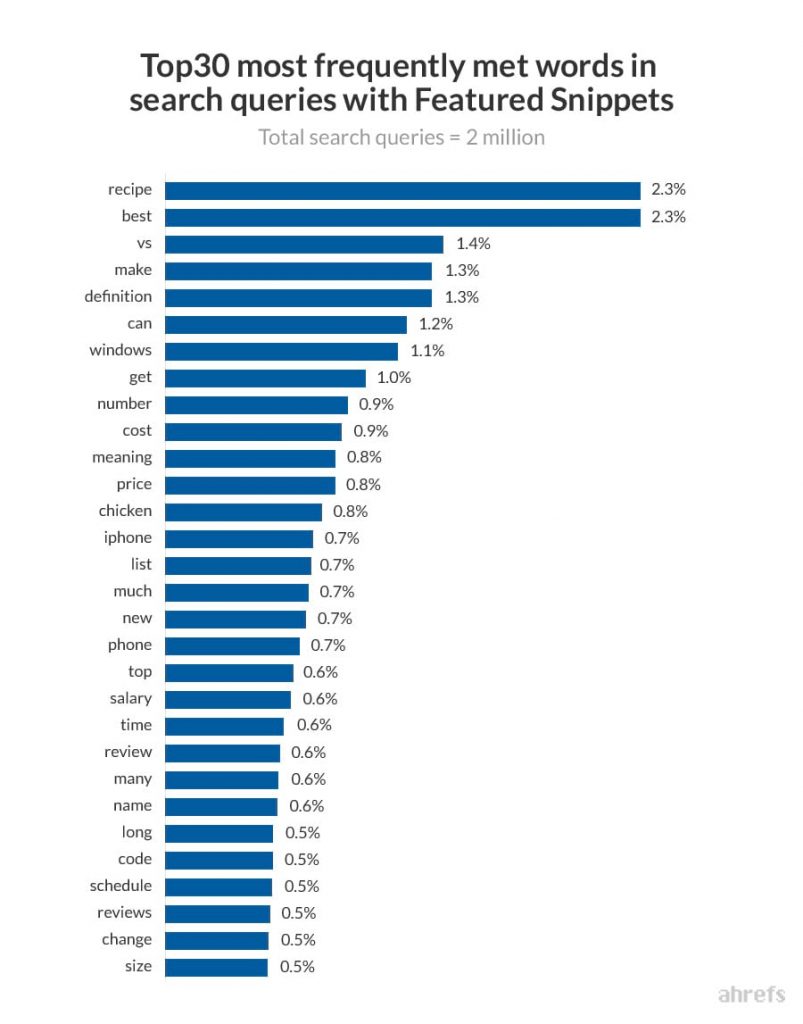Google Snippets Part 2: Optimizing for that Top Spot
This is part 2 of our blog series about Google snippets. If you want to learn how to optimize your content to earn that coveted spot continue reading… if you want to learn how Google snippets impact overall search behavior, check out Google Snippets part 1.
As we discussed in Google Snippets Part 1: How do snippets impact search behavior? Google is always updating its algorithm. Their ultimate goal is to be able to understand content at the same level as a human. As part of this process, the algorithm is changing in an attempt to understand the content within articles. Once the algorithm can identify the content, it can associate a searcher’s question with the perfect article, and snippet from within the article, to provide them with the best answer. in a way that it can easily identify the answers to all questions with the perfect article. In recent months, Google has begun using more and more “snippets” to answer questions. Since Google is always secretive about their SEO rules, it is up to us to learn how to optimize our content for this coveted top spot.
Google snippets are the coveted crown jewels of SEO.
Just for a quick review…
What are Google Snippets?
Google snippets are the 2-3 sentences of text that sometimes appear at the top of search results. They usually appear when someone asks a specific question, and are pulled from the #1 or #2 ranking article on the results page.
Here is an example of what a snippet looks like:
Understanding Snippets
Understanding the kinds of terms and questions that often trigger Google snippets is the first part of the optimization process. You could do everything right to optimize your content for a Google snippet – but if it isn’t something Google has a snippet for to begin with or doesn’t fall into a certain category you could be out of luck. However, just because Google doesn’t currently have a snippet on a specific search results page doesn’t mean they will never have a snippet for that results page.
Search Volume Distribution
As it turns out, most of the keywords that trigger snippets don’t have particularly high monthly search volumes. A survey completed by Ahrefs found that a majority of featured snippets are triggered by long-tail keywords.
Long-tail keywords are highly targeted and specific terms that get some search volume every month but usually not a lot. Targeting these keywords in your content is the key to getting the right leads and possibly snagging that top Google snippet spot. Since these have low search volume they tend to be less competitive than more general terms but have high specificity. In short, you’re going to want to figure out some strong long-tail keywords to focus your content around or find your current high performing content that already targets these terms to begin the optimization process.
Google snippets usually appear when users ask questions that include long-tail keywords.
The Keywords of Your Keywords
I know that sounds a little odd, but there are some trending terms in Google snippets. Understanding what these words are can help you figure out the best long-tail keywords you want to optimize for. The same Ahrefs survey found the following:
Although not all of these terms may apply to your specific product, there are some general terms included that can be useful in constructing your long-tail keywords. In particular:
- Best
- Vs
- Definition
- Meaning
- Review
- Reviews
Understanding the keywords of your long-tail keywords can help you write content based on questions people are actually asking.
These are terms that you can easily target to get that top spot. Have a complicated product? Do a definitional piece that targets your main phrase. Sell multiple products that are similar but have some differences people may not know about? Do a versus piece that compares them. Willing to be daring? Compare yourself to a competitor. Understanding what types of terms trigger Google snippets is the first step towards optimization.
Google Snippet Optimization
Writing Optimized Content
Now that you understand some of the basics of how Google snippets let’s go through the optimization process.
- Identify Common Questions
Snippets answer questions, that’s the whole point, so understanding the types of questions people are asking is the first step in creating your optimized snippet content. Keep in mind the keywords within your long-tail keywords as we discussed above and also think about the different ways people may ask questions related to your products like:
- How does…
- How do…
- How to…
- What is…
- Why do…
- Why does…
To help you identify the right questions you can explore possibilities using Google’s autocomplete feature or a tool like Answer the Public.
- Write your content in a way that provides a clear and direct answer
Once you have identified your question, you’re going to want to write a comprehensive blog post or content piece. Although there might be a lot to say, you want to make sure to provide an area that has a short and precise answer. Once you have that you can and should deep dive into other related questions, but if you don’t have the short precise kind of snippet answer Google is looking for, you are unlikely to secure that top spot.
- Don’t forget about normal SEO
Although you are trying to optimize for a Google snippet, these short answers are usually taken from the #1 or #2 result on the page. This means that all normal SEO rules still apply, and are even more important if you don’t currently rank high for the question/term.
When optimizing your content for Google snippets, normal SEO rules still apply.
Technical Components
While content is the key to snagging a Google snippet, there are some technical components you should also take into consideration.
- Answers should be between 54 and 58 words
- If the answer requires steps or bullets make sure to format them in that way
- Good UX on your website helps with overall SEO and therefore snippets as well
- Use formatting to make your answers stand out (block quotes, bullets, bold text, headers, clear “question” and “answer”)
- If you want specific content featured in a snippet you should use “<p>” tags around the text following an appropriate header
Remember…
You don’t only have to always generate new content to optimize for snippets. In cases where it makes sense, you can go back and revitalize older content with updated formatting or new information. If you already have a high ranking page, this may be the best way to secure the top spot.
SEO takes time – consider revitalizing older content with updated information and formatting to snag that snippet.
Taking Advantage of That Top Spot
Once you have optimized your content for snippets it may take some time to actually get the top spot. Like everything related to SEO these things take time, however, once you gain that spot you want to take advantage of the traffic you are getting. Make sure your post has a prominent call to action so you can generate sales. Take advantage of the additional brand exposure and start generating those leads.
- Medical Marketing SEO: Using SEO to Target Doctors and Healthcare Professionals (+ Checklist) - December 4, 2023
- Marketing to Dentists: How to Market to Dentists - August 8, 2023
- HCP Marketing Trends 2023: 23 HCP Marketing Stats for 2023 - November 30, 2022






